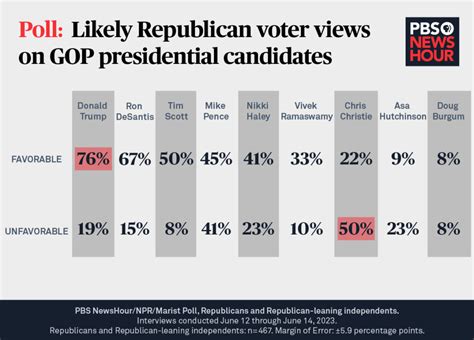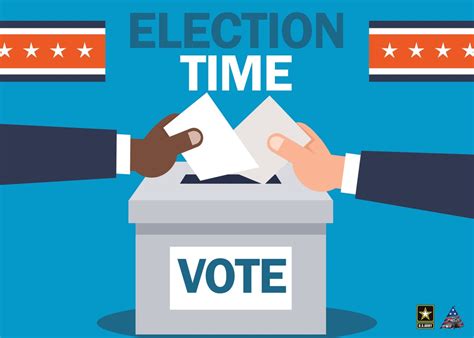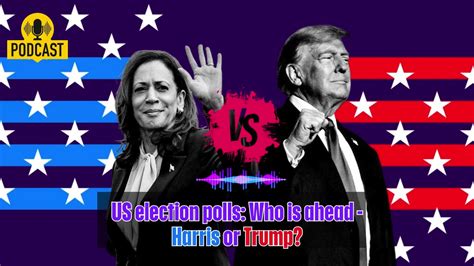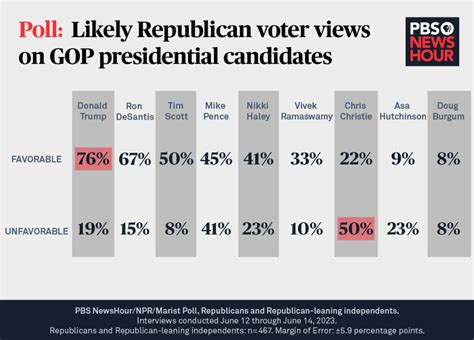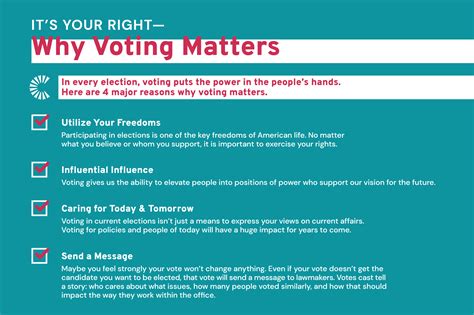Explore the dynamics of presidential election polls, key influencing factors, interpretation of recent results, and the impact on voter behavior.As the nation gears up for the upcoming presidential election, understanding the dynamics of polling data has never been more critical. Presidential Election Polls: Trends And Predictions delves deep into the methodologies, trends, and influences that shape public sentiment and electoral outcomes. From decoding intricate polling mechanisms to examining the key factors that sway voter opinions, this article provides a comprehensive overview of how poll results can inform predictions and influence voter behavior. Explore the intricate relationship between polling data and real-world politics, and gain insights into what the latest results may mean for the future of our nation. Stay informed and empowered as we navigate the fascinating world of presidential election polls together!
Understanding Presidential Election Polls: An Overview
Presidential election polls are an essential component of the electoral process, providing insights into voter sentiment and potential outcomes. These polls are conducted to gauge public opinion about presidential candidates, political parties, and key issues influencing the electorate. By analyzing this presidential election data, analysts can develop trends and anticipatory models that help predict the behavior of voters on election day.
Typically, presidential election polls utilize samples of voters, asking them about their preferences and opinions in a structured manner. The results are then extrapolated to represent the larger population. This sampling process includes various demographic factors such as age, gender, income, and geographical location to ensure a comprehensive overview of public sentiment.
It is crucial to note that not all polls are created equal. The methodology, timing, and sample size can influence the reliability of the results. Polls conducted closer to the election are often viewed as more indicative of actual voter behavior, while those taken months in advance may not accurately reflect the political landscape as campaigns evolve.
Furthermore, the interpretation of polling data requires an understanding of both party dynamics and voter psychology. Factors such as candidate charisma, current events, and social pressures can significantly alter voter opinions over time. As such, while presidential election polls are valuable tools for understanding the electoral landscape, they should be considered as one of many factors influencing the anticipated outcomes of an election.
Key Factors Influencing Presidential Election Trends
Presidential elections are complex events influenced by a myriad of factors that can sway public opinion and voting behavior. Understanding these key factors is essential for interpreting the trends in Presidential Election polls and predictions. Below are some of the most significant influences on electoral trends:
| Factor | Description |
|---|---|
| Economic Conditions | The state of the economy can heavily influence voter sentiment. Factors such as unemployment rates and inflation often dictate public perception of the incumbent party. |
| Media Influence | Media coverage and social media trends can shape public opinion in significant ways, amplifying specific narratives that may favor or disadvantage candidates. |
| Candidate Appeal | Personal charisma, public speaking skills, and the candidate’s background can greatly affect their attractiveness to voters. |
| Voter Demographics | Shifts in voter demographics, such as age, race, and education level, can lead to changes in voting patterns and preferences, impacting overall trends. |
| Political Climate | Current political issues, including social justice, healthcare, and foreign affairs, can influence how a candidate is perceived and voted for during the election. |
By analyzing these factors, political analysts and pollsters can gain deeper insights into the direction of Presidential Election trends, creating a more nuanced understanding of voter behavior and the likely outcomes of upcoming elections.
How Polling Data Shapes Presidential Election Predictions
Polling data plays a crucial role in shaping predictions for the Presidential Election, providing insights into voter preferences and potential electoral outcomes. The analysis of this data involves several key elements:
| Polling Methodologies | Impact on Predictions |
|---|---|
| Phone Interviews | Often yield comprehensive feedback but may miss younger demographics who prefer online engagement. |
| Online Surveys | Capture a broad spectrum of opinions quickly, though they can be biased towards tech-savvy populations. |
| Focus Groups | Provide qualitative insights into voter sentiment, emphasizing emotional reactions and nuanced perspectives. |
One major way polling data influences predictions is by tracking shifts in public opinion over time. As campaigns unfold, polls can reveal which messages resonate with voters and which do not, allowing candidates to adjust their strategies accordingly.
Furthermore, aggregating polls from various sources can help mitigate the biases of individual surveys. Websites dedicated to election analysis, such as FiveThirtyEight, compile polling data to present a more comprehensive picture of the electoral landscape. By analyzing trends from these aggregations, political analysts can offer educated forecasts about the likely outcomes of the Presidential Election.
Another critical aspect is the concept of “swing states.” Polls in these battleground regions often receive heightened attention, as they can determine the overall election results. Consequently, fluctuations in voter support within these states can heavily influence national predictions.
In summary, the interplay between polling data and electoral predictions is multifaceted. By effectively interpreting this data, analysts can gain a clearer understanding of the evolving political landscape and provide voters with insights that could shape their electoral choices.
Interpreting Recent Results in Presidential Election Polls
Interpreting recent results in Presidential Election polls requires a nuanced understanding of data and its context. Polls are snapshots of public opinion at a given moment, influenced by various external factors. When analyzing these results, it’s essential to consider the methodology employed, including the sample size, demographics, and whether the poll is a registered voter survey or a likely voter survey.
One of the significant aspects to consider is the margin of error. A smaller margin indicates a more accurate representation of voter sentiment, while a larger margin suggests a broader range of possible outcomes. For instance, if a poll shows Candidate A leading Candidate B by 3%, but the margin of error is ±4%, this means that Candidate B could potentially be leading, revealing the uncertainty in the results.
Furthermore, recent events—such as debates, policy announcements, or major news stories—can significantly sway public opinion. It’s crucial to analyze how these events align with shifts in poll numbers. Observing trends over time rather than focusing solely on individual poll results can provide a clearer picture of the electoral landscape.
The interpretation of polling results should also consider the social and political context. Factors like regional preferences, economic conditions, and key demographic shifts can influence voting patterns and, consequently, poll outcomes. Being aware of these influences can help stakeholders make informed predictions about the upcoming Presidential Election.
The Impact of Polls on Voter Behavior in Presidential Elections
Presidential election polls play a crucial role in shaping the landscape of electoral competitions. They influence not only the perceptions of candidates but also the behaviors of voters. Understanding how Presidential Election polls affect voter behavior is essential for both campaign strategists and the general electorate.
One notable impact is the phenomenon known as the bandwagon effect. As candidates gain popularity in polls, undecided voters may feel compelled to support them, believing that they are the likely winners. This can lead to a contagious momentum that shifts votes away from less favored candidates as people seek to align themselves with perceived success.
Conversely, when polling indicates a candidate is struggling, it may discourage potential supporters from voting for them, reducing turnout from their base. This can create a self-fulfilling prophecy if negative polling leads to a lack of enthusiasm among voters, ultimately impacting the candidates’ abilities to mobilize their supporters.
Furthermore, polls can create a sense of urgency among voters. When a close race is projected, voters may feel a heightened sense of duty to participate, leading to increased voter turnout. This is particularly important during pivotal elections where every vote counts.
In addition to these effects, the way polls present data can also shape public opinion. Leading media outlets and pollsters often frame polls in specific contexts, which can influence how voters interpret the information and make decisions at the ballot box. Thus, the narrative constructed around poll results can significantly sway voter perceptions and choices in a Presidential Election.
Overall, the implications of Presidential Election polls extend beyond mere statistics; they can alter the very dynamics of voter engagement and electoral outcomes. As such, both candidates and voters must approach polling data with a critical eye, understanding the potential influences at play.
Frequently Asked Questions
What factors influence presidential election polls?
Key factors that influence presidential election polls include voter demographics, economic conditions, political events, and media coverage.
How often are presidential election polls conducted?
Presidential election polls are typically conducted regularly, often weekly or bi-weekly, especially as the election date approaches.
What is the significance of swing states in election polls?
Swing states are critical in election polls because they can dramatically change the outcome of an election; candidates focus their efforts on these areas to sway undecided voters.
How do pollsters ensure the accuracy of their predictions?
Pollsters aim for accuracy by using random sampling methods, weighting data to reflect demographic profiles, and applying statistical techniques to account for potential biases.
What are the limitations of presidential election polls?
Limitations of presidential election polls include potential sampling errors, response bias, and the uncertainty of voter turnout, particularly in unpredictable political climates.
How has the accuracy of polls changed over recent elections?
The accuracy of polls has varied in recent elections, with mixed results due to factors like the rise of non-traditional voters and changing social dynamics affecting responses.
What role does technology play in modern polling methods?
Technology enhances modern polling methods through online surveys, advanced data analytics, and real-time adjustments, allowing for quicker and more responsive polling techniques.

